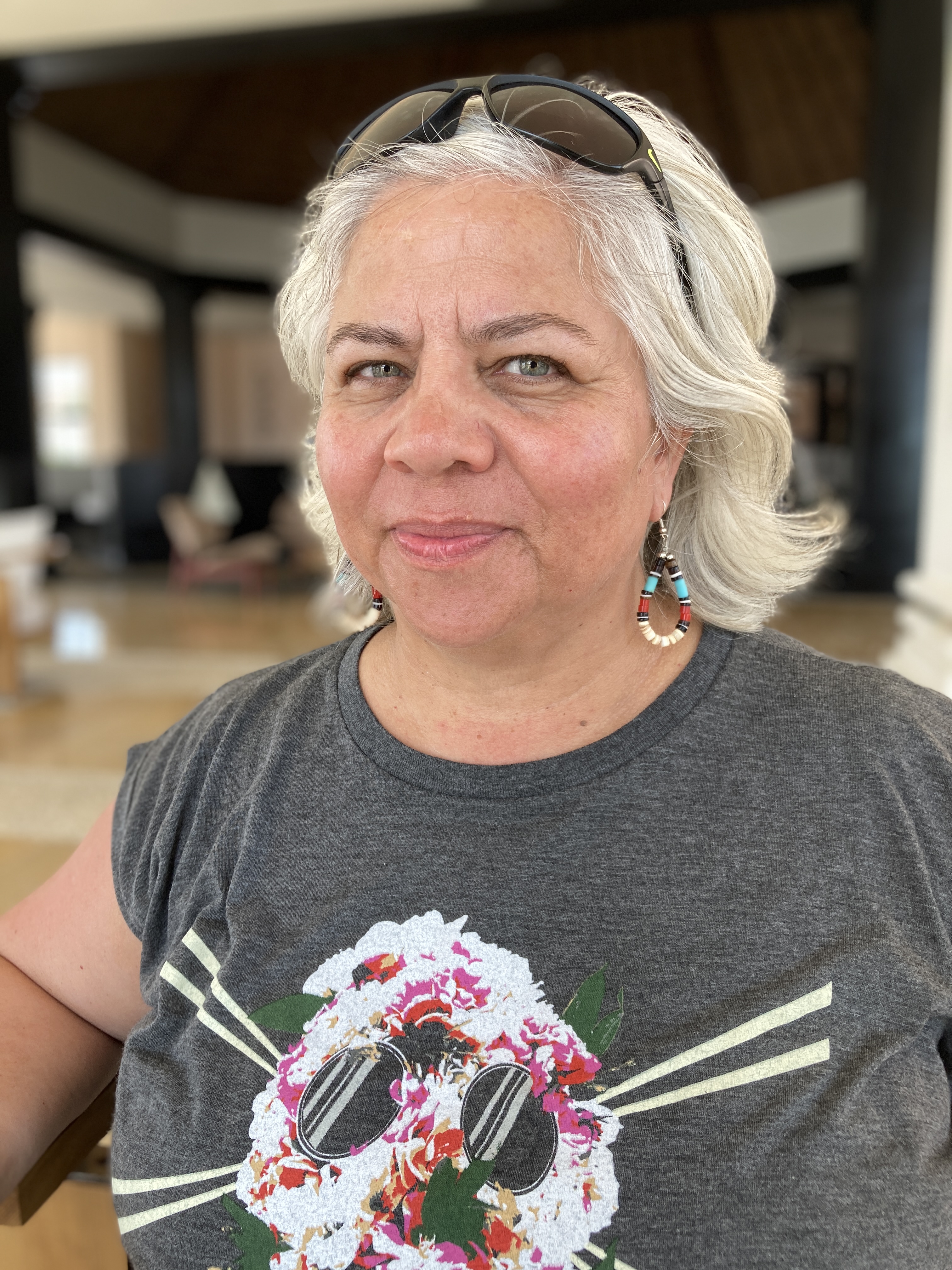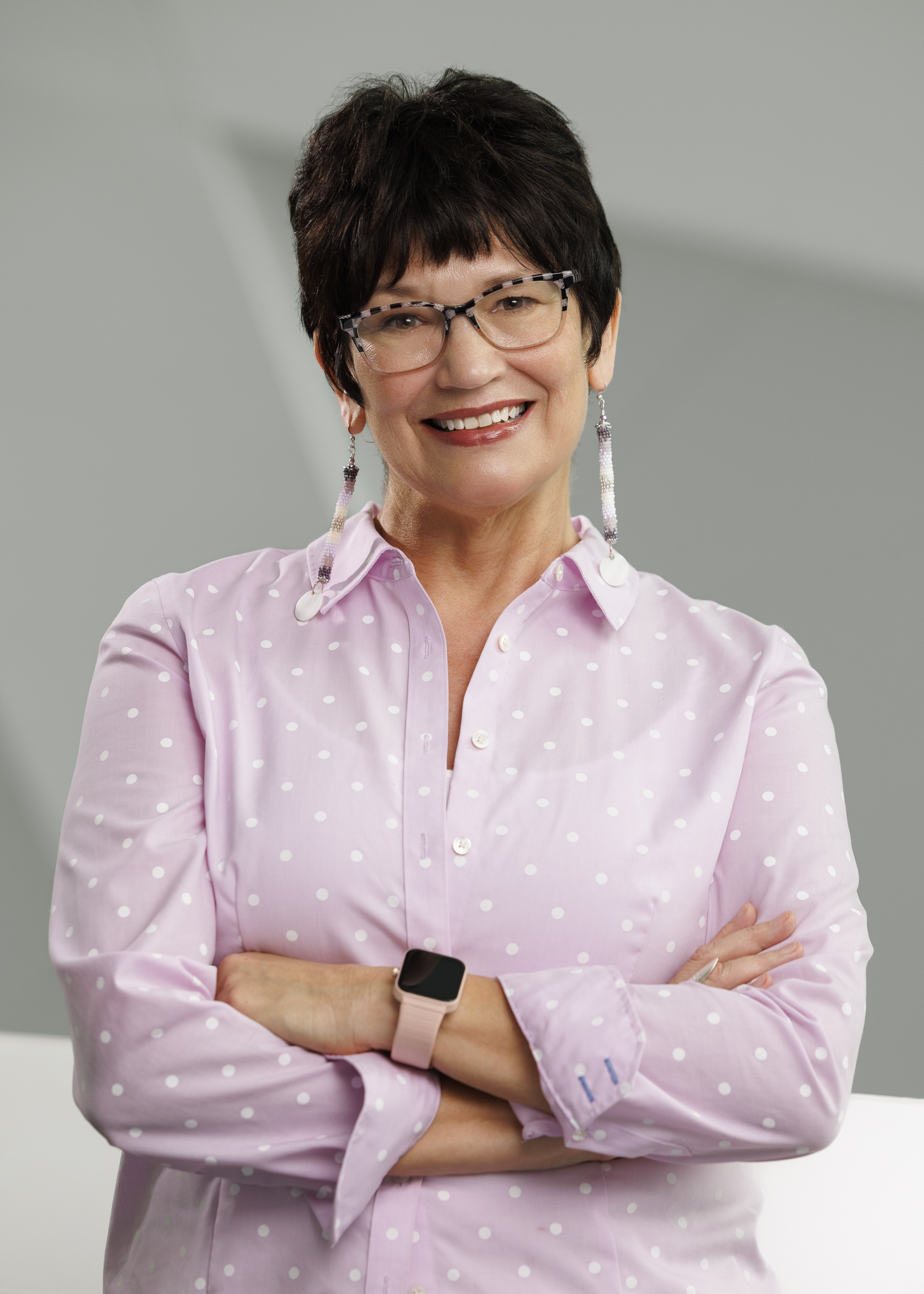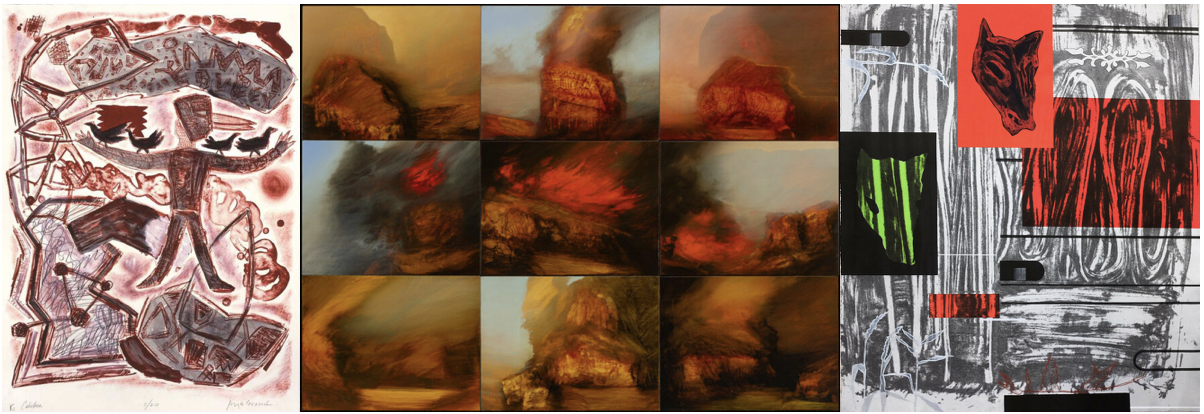Indigenous Perspectives II: Museums, Stewardship, and Native American Art
The event begins at 4:30 p.m., with a reception including light refreshments. Between 4:45 and 5:45 p.m., short tours of two exhibitions including works by Native American artists will be offered by Kemper Museum curators Dana Ostrander and Meredith Malone. The panel with our three guest speakers starts at 6 p.m. and will include time for questions from the audience. The event will end by 7:30 p.m.
Presentations by: Dr. heather ahtone, Dakota Hoska, Dr. Meranda Roberts
heather ahtone is a citizen of the Chickasaw Nation and descendant of strong Choctaw women. She currently serves as Director, Curatorial Affairs, at First Americans Museum (FAM) in Oklahoma City, Oklahoma, and has worked in the Native arts community since 1993. Dr. ahtone has established a career as a curator, arts writer, and cultural researcher. She serves on numerous advisory boards and in professional capacities that advocate on behalf of Indigenous knowledge, museum practice, and scholarship in the field, including current service as President for the Native American Art Studies Association and on the American Art Journal editorial board. Her current research explores the intersection between Indigenous cultural knowledge and contemporary arts. ahtone has worked at the Institute of American Indian Arts Museum (MoCNA), the Southwestern Association of Indian Arts (Santa Fe, New Mexico), on contract with Ralph Appelbaum Associates (New York), and in several positions at the University of Oklahoma, where she served as the curator of Native American and Non-Western art at OU's Fred Jones Jr. Museum of Art for over six years. She earned an associate degree in Creative Writing at the Institute of American Indian Arts, bachelor degree in Printmaking at the University of Oklahoma, master degree in Art History, and a doctoral degree in Interdisciplinary Studies (Art History, Anthropology, Native American Studies). She continues to seek opportunities to broaden discourse on global contemporary Indigenous arts. In addition, she is committed to serving the global Indigenous arts community.
Dakota Hoska (Oglála Lakȟóta Nation, Pine Ridge, Wounded Knee) serves as the Associate Curator of Native Arts and NAGPRA coordinator at the Denver Art Museum where she has been employed since 2019. Hoska completed her MA in Art History, focusing on Native American Art History, at the University of St. Thomas, St. Paul, MN (2019). She also completed two years of Dakhóta language at the University of Minnesota (2016) and received her BFA in Drawing and Painting from the Minneapolis College of Art and Design (2012). Dakota has participated in multiple curatorial programs such as the EPIC International Curatorial Exchange Program through the Association of Art Museum Curators, the Otsego Summer Seminar sponsored by the Fenimore Art Museum, and the Shakopee Mdewakanton Native American Museum Fellowship at the Minneapolis Institute of Art, to name a few. She currently serves on multiple national advisory councils and boards and frequently writes about and presents on issues related to curating Native North American art collections.
Dr. Meranda Roberts, a citizen of the Yerington Paiute Tribe and Chicana, holds a Ph.D. in History and an M.A. in Public History from the University of California, Riverside. She is a Visiting Professor in the Art History Department at Pomona College and serves on the Scholarly Advisory Committee for the Smithsonian Women’s History Museum, where she advocates for inclusive representation of Indigenous histories. An accomplished scholar and curator, Dr. Roberts co-curated Native Truths: Our Stories. Our Voices. at the Field Museum of Natural History. She also curated the 2023 Native American Invitational Exhibition at Idyllwild Arts, Still We Smile: Humor as Correction and Joy, and curated Continuity: Cahuilla Basket Weavers and their Legacies at the Benton Museum of Art at Pomona College. Most recently, she co-edited Surviving the Long War: Creative Rebellion at the Ends of Empire, published by Bridge Books in Chicago. Through her work, she is dedicated to advancing anti-colonial pedagogy and Indigenous methodologies, holding colonial institutions accountable for harmful narratives, and reconnecting cultural heritage items with descendant communities to ensure their stories reflect their enduring significance.
Registration for this event has closed.
Please contact Alison Eigel Zade (ealison@wustl.edu) to be placed on the waitlist.
L-R: Jaune Quick-to-See Smith (Enrolled Salish member), Cahokia, 1989. Lithograph. Kemper Art Museum; James Lavadour (Walla Walla), Like Rain, 1995. Oil on panel. John and Susan Horseman Collection, courtesy of the Horseman Foundation; Duane Slick (Enrolled Meskawki member), Crafting a Consequential Narrative, 2020. Collagraph, relief, screen print, acrylic, and chine collé on Rives BFK white. Kemper Art Museum.
This program is supported through funding from the Department of Art History & Archaeology and the Program in American Culture Studies, both in Arts and Sciences, and is co-sponsored by the Mildred Lane Kemper Art Museum.




